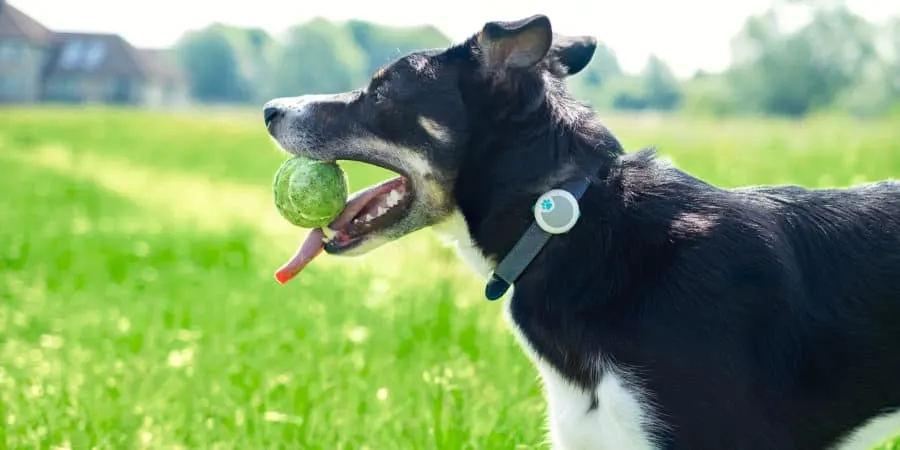Are you worried about leaving your dog at home alone after months together? Certified Dog Trainer and Animal Behavior Specialist Mikkel Becker, in collaboration with Sure Petcare, has tips on how to transition your dog to the “new normal” and how to reteach your dog to regain some independence after these months of non-stop togetherness.

Adjusting back to life as usual (or, more like the ‘updated usual’), has the
potential to stress out dogs and cats who have settled comfortably into their new routine of having humans at home nearly all the time. And, while dogs are more notorious for stressing out over separation, cats too can become overly attached and dependent upon their people, and may become anxious and upset when suddenly left at home alone.
Thankfully, there are ways to ease into the difficulty of transitioning to the new normal for both dogs and cats by starting to proactively prep now for the eventual return to some form of real life.
A sudden switch in regular routine and schedule can be a significant source of stress, because both dogs and cats thrive on predictability. For this reason, having a set structure to the animal’s day, even while their humans are still primarily at home, can minimize stress now as well as when the schedule eventually switches to humans leaving home for longer lengths of time.
To further the benefit of keeping a consistent routine, setting up the environment to mock what life will eventually transition to when humans return to work, school or other activities, can be very helpful.
In particular, incorporating three key elements into your pet’s daily structure can ease tension during transition. These key elements include monitoring signs of stress when the animal is left alone, incorporating activities that increase happy independence, and proactively preparing the pet for calm contentment when left home alone.
Monitoring Animal Anxiety & Tracking Progress
Even under current quarantine conditions, it’s possible to monitor pet stress during times of separation.
Note that if an animal is going to become anxious upon separation from their human, signs of distress are likely to happen during the first 10 minutes.
A pet’s ability to cope while their people are away can be monitored during fast trips out of the home or during short separations when the pet’s kept in a different area of the home apart from their humans.
Below are some of the latest technologies for tracking your animals’ behavior while you’re away from home.
A camera that’s secured up and away from the pet offers an easy visual and audio picture of what the pet does while home alone. The camera can alert pet owners to signs of distress and separation anxiety as well as interpret what your dog or cat is saying via body language; and how this eludes to their level of stress or relaxation in different situations.

A pet activity and behavior monitor, like Sure Petcare’s Animo, offers invaluable information about a dog’s emotional well-being while their people are away.
Animo tracks important information including your pet’s level of physical activity, peak activity times, excessive barking, shaking or inability to settle down to rest or sleep. The recorded data compared against the animal’s daily norm can help point out concerning behaviors.
Setting up 10-minute separations to take a walk, run a quick errand, or even step into the shower, can offer some insight into an animal’s current anxiety level.
And, continuing to monitor separations on occasion using a camera and activity tracker also offers ongoing insight into how different conditions, like longer separations, may impact the pet differently.
Monitoring also offers important insight into how the pet is progressing and what changes seem to make a positive difference in canine and cat coping when left alone.
Note that keeping the activity tracker and video records can be extremely helpful for cases of separation anxiety that require additional assistance from a veterinarian, behaviorist or reward based training professional.
The ongoing record allows the professional insights into the canine or cat’s emotional condition and behavior when left alone, which can be helpful in assessing the situation and developing a plan to help.
Happy Independence Activities
Build confidence in the cat or canine with being on their own through independent activities that build happy associations.
These experiences provide enjoyable outcomes, even while they’re away from their human’s side. Pleasant outcomes occurring even while people are away is important, because animal distress may hinge in part upon them feeling that access to things they enjoy is limited only to when their humans are around.
Solo enjoyment activities can be incorporated into the dog or cat’s everyday life to help prep for times when their human will be away.
These activities can also be enjoyed with their human nearby to ensure they don’t signal imminent separation. For instance, a stuffed food puzzle can primarily be given when the person is away, but it can at random also be given while their human is at home.
Feed meals, portions of meals, or treats from food puzzles.
Food puzzles can increase animal satiation and make the animal better able to settle at other times of the day. The animal also gains greater control over their environment because their actions can directly impact positive outcomes, ie. food and treats.
And, by extension, when the animal’s own actions directly impact the environment around them, this can build confidence in their own ability to influence the happy outcomes that occur, rather than ‘all good things’ come only from human hands.
Offer the dog and cat’s meals at times when their people are away to increase happy independence.
Animals may be fed in separate rooms or specific areas, like their crate, to avoid food competition and provide further comfort when left alone. Just ensure that the animal is relaxed enough to happily eat when left alone.
In the beginning, this may mean accommodating the situation to ensure success by keeping the crate or play pen door open initially to see if the animal can calmly eat and enjoy their treat in this space.
Establishing calming rituals for your pet can be helpful in creating a soothing, serene environment in the home that reduces stress. And, these rituals can continue when you leave the home to provide ongoing comfort while you’re away.
Calming music, like reggae, species specific music, soft rock, and classical music, or audiobooks can be played to lull them into a more relaxed state and minimize outside input that can distress the pet.
Calming acoustics can be used in combination with white noise, like a quiet fan, fountain, or white noise machine; which further drowns out outside noise that may startle or upset the pet.
Entertainment can also occur while humans are away with independent activities; such as DOGTV for canines. Or, offering independent play activities for the dog to engage in, such as rotating an assortment of toys that are safe for the dog to play with when alone.
Another good tip is to change the assortment up each day to keep their novelty and peak canine interest. Cats also have a wide variety of independent activity toys that they can engage in while their humans are away; including self-timed toys that engage the cat’s prey drive and desire to chase or pounce.
Proactive Separation Preparation

As much as we may want to, DON’T devote all of your time and attention to your furry friend when you’re home. Doing so can create an over reliance of the pet upon their person and not prepare the animal for eventual parting.
Just as you would be gone for the day at work or school, consider setting up timeframes where you ignore the dog or cat. Then, as would happen during regular life, you can lavish the love, time and attention on your pet outside of the at-home hours you set for yourself to work or take me-time.
Animals may in part become clingy, because it’s inadvertently reinforced and rewarded by their pet parents.
For that reason, it’s important to recognize and reward signs of independence that the animal displays.
For instance, if they’re lying on their pet bed at a distance or playing with a toy in another room, those are opportunities to reward your pet for being independent; rewarding with a tiny tasty treat or quick play session.
And, by extension, largely ignore more excitable, pushy, or needy behavior that the dog or cat exhibits, while continuing to reinforce moments of calm or happy independence that the pet displays.
Smart feeders are key for keeping feeding schedules routine and creating a healthy cat independence at mealtime. Creating consistency for a cat’s care is especially essential for felines who are highly reliant on predictability, and can actually become stressed to the point of becoming sick if regular care routines are thrown off by change.
For this reason, smart feeders, like the SureFeed Microchip Pet Feeder Connect, can provide a semblance of control and consistency for the cat, who can access the feeder, without competition or disturbance from other household pets.
And, the feeder dispensing food is also separated from the pet parent, which can help build upon the animal’s ability to cope even when their human isn’t constantly around. The feeder can also be set to feed at times when the humans will eventually be away from home to further pair positives with time apart.
When leaving and coming home, offer a calm acknowledgment to your pet.
Animals actually do better being acknowledged with a little parting ritual than they do being completely ignored; for instance, a quick goodbye while handing the dog or cat a tasty treat when leaving.
Or, when possible, consider feeding a long lasting food puzzle or chew that’s safe for independent use. There may even be multiple puzzles or treats hidden throughout the home in a single pet home, or in homes where animals get along well without competing over resources.
Hopefully these tips will help you and your pets transition back into the “new normal.”
You Might Also Like
4 Tips on Social Distancing & Dog Walking!
How to Make Your Dog Feel Secure and Safe During Anxious Times
- Selecting the Best Online Emotional Support Animal Letter Service - December 14, 2023
- How to Store Dog Toys –10 Solutions to Organize Those Toys! - July 7, 2022
- Best Practices to Puppy-Proof Your Home - June 27, 2022
